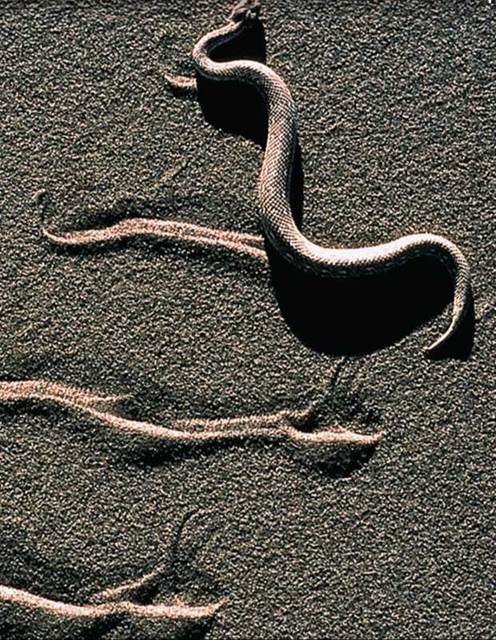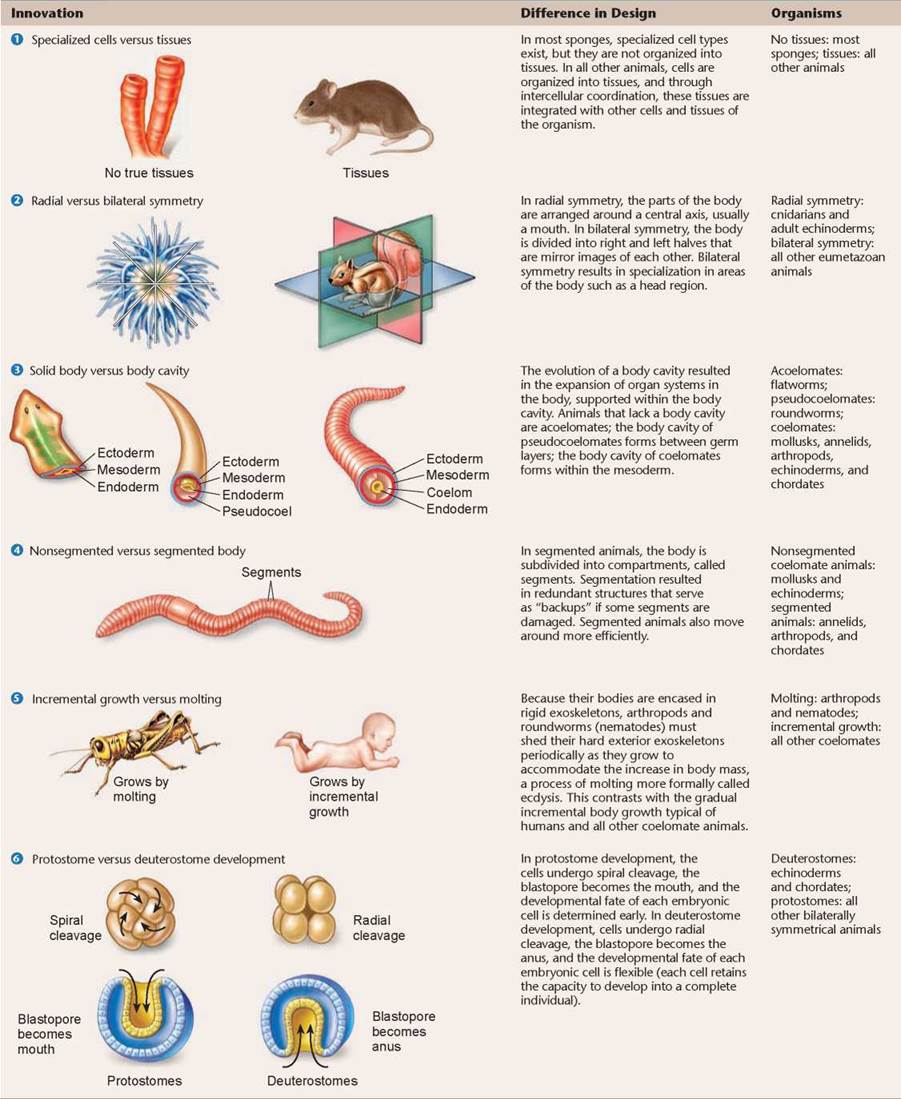THE LIVING WORLD
Unit Six. Animal Life
22. The Animal Body and How It Moves

When most people think of animals, they think of their pet dogs and cats, and of the animals that they’ve seen in a zoo, on a farm, in an aquarium, or out in the wild. Despite the differences among these animals, they all share the same basic body plan, with the same sorts of tissues and organs operating in much the same way. In this chapter, we will begin a detailed consideration of the biology of animals and of the fascinating structure and function of their bodies. After examining the major tissues of the vertebrate body, we will end the chapter by focusing in on how the animal body achieves a complex activity, locomotion, by coordinating the activities of nerves, muscles, and bones to propel itself through its environment. Animals are unrivaled among the inhabitants of the living world in their ability to move about from one place to another. Under water, on land, and in the air, animals swim, burrow, crawl, slither, slide, walk, jump, run, glide, soar, and fly. This sidewinder rattlesnake can move surprisingly rapidly over the desert sand by a coordinated series of muscle contractions, throwing its long body into a series of sinuous curves. On land, only vertebrates and arthropods have developed a means of rapid surface locomotion.
22.1. Innovations in Body Design
As described in chapter 19, six evolutionary innovations in the design of animals’s bodies have led to the diversity seen in the kingdom Animalia.
1. Tissues
The first innovation in body design was the development of tissues (1 in table 22.1). The simplest animals, the sponges, have some cell specialization but mostly lack tissues; a few seem to possess rudimentary tissues. All other animals possess tissues and highly specialized cells.
2. Radial Versus Bilateral Symmetry
All sponges lack any definite symmetry, instead growing asymmetrically as irregular masses. Symmetrical bodies, 2 in the table, first evolved in cnidarians (jellyfish, sea anemones, and corals) and ctenophores (comb jellies). The bodies of these two types of animals exhibit radial symmetry, in which the parts of the body are arranged around a central axis.
The bodies of all other animals are characterized by bilateral symmetry, in which the body can be divided into left and right halves along only one plane. Bilateral symmetry allows parts of the body to evolve in different ways, permitting the segregation of organs in different parts of the body. In some higher animals like echinoderms (sea stars, also called starfish), the adults are radially symmetrical, but even in them, the larvae are bilaterally symmetrical.
3. Solid Body Versus Body Cavity
Another transition in the evolution of the animal body plan, shown in 3 in the table, was the evolution of the body cavity. A body cavity allowed the evolution of efficient organ systems, more rapid circulation of fluids within the body, and complex movement of the animal body.
In the animal kingdom, we see three body arrangements: Some animals called acoelomates have no body cavity, whereas others have either of two different types of body cavities, distinguished primarily by where they develop within the three embryonic layers. A body cavity that forms between the endoderm and the mesoderm is called a pseudocoel, and the animals in which it occurs are called pseudocoelomates. A body cavity that forms entirely within the mesoderm is called a coelom, and animals in which it occurs are called coelomates.
4. Nonsegmented Versus Segmented Body
A further transition in animal body plan involved the subdivision of the body into segments, 4 in table 22.1. Segmentation permits the following evolutionary advantages:
1. In annelids and other highly segmented animals, each segment may go on to develop a more or less complete set of adult organ systems. Damage to any one segment need not be fatal to the individual because the other segments duplicate that segment’s functions.
2. Locomotion is far more effective when individual segments can move independently because the animal as a whole has more flexibility of movement. Segmentation can be seen in the bodies of all annelids, arthropods, and chordates, although it is not always obvious.
5. Incremental Growth Versus Molting
Most coelomate animals grow the way you do, by gradually adding mass to their body. Nematodes and arthropods grow very differently. Their bodies are encased within a hard exoskeleton, and this exterior shell must be shed periodically in a process called molting (5 in table 22.1) to make way for a larger body.
6. Protostomes Versus Deuterostomes
The echinoderms (sea stars) and the chordates (vertebrates) have a series of key embryological features different from those shared by other animal phyla. Because it is extremely unlikely that these features evolved more than once, it is believed that these two seemingly quite different phyla share a common ancestor. They are members of a group called the deuterostomes (6 in the table). All other coelomate animals are called protostomes. Deuterostomes differ fundamentally from protostomes in three aspects of embryonic growth.
1. How cleavage forms a hollow ball of cells.
Deuterostomes differ from protostomes in one of the earliest steps of development, the divisions that determine the plane in which the cells divide. Most protostomes undergo spiral cleavage, whereas deuterostomes undergo radial cleavage.
2. How the blastopore determines the body axis. Deuterostomes differ from protostomes in the way in which the embryo grows. The blastopore of a protostome becomes the animal’s mouth, and the anus develops at the other end. In a deuterostome, by contrast, the blastopore becomes the animal’s anus, and the mouth develops at the other end.
3. How the developmental fate of the embryo is fixed. Most protostomes undergo determinate cleavage, which rigidly fixes the developmental fate of each cell very early. No one cell isolated at even the fourcell stage can go on to form a normal individual. In marked contrast, deuterostomes undergo indeterminate cleavage, with each cell retaining the capacity to develop into a complete individual.
TABLE 22.1. INNOVATIONS IN BODY DESIGN

Key Learning Outcome 22.1. Six key innovations in animal body design set the stage for the great diversity in the animal kingdom.